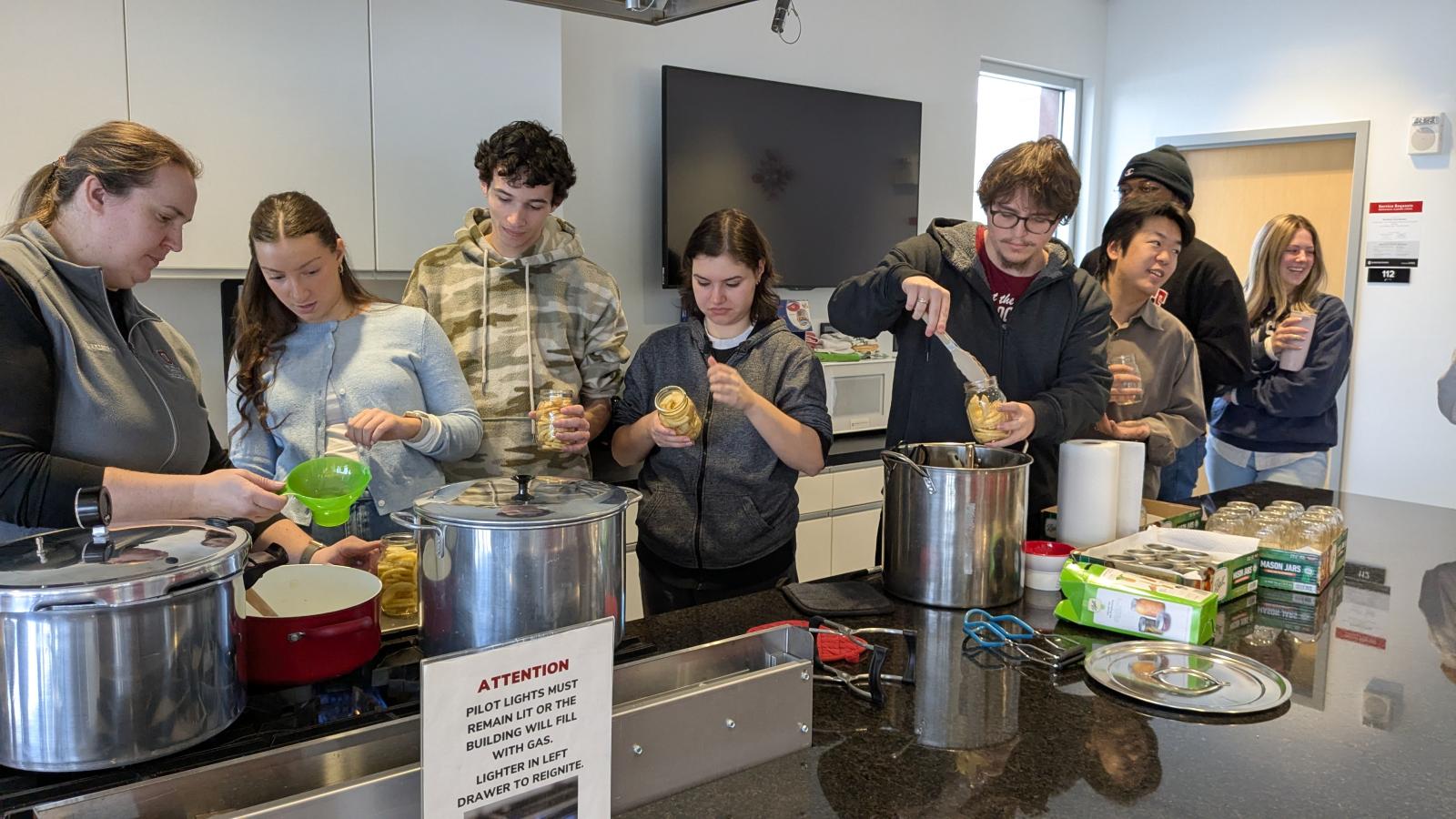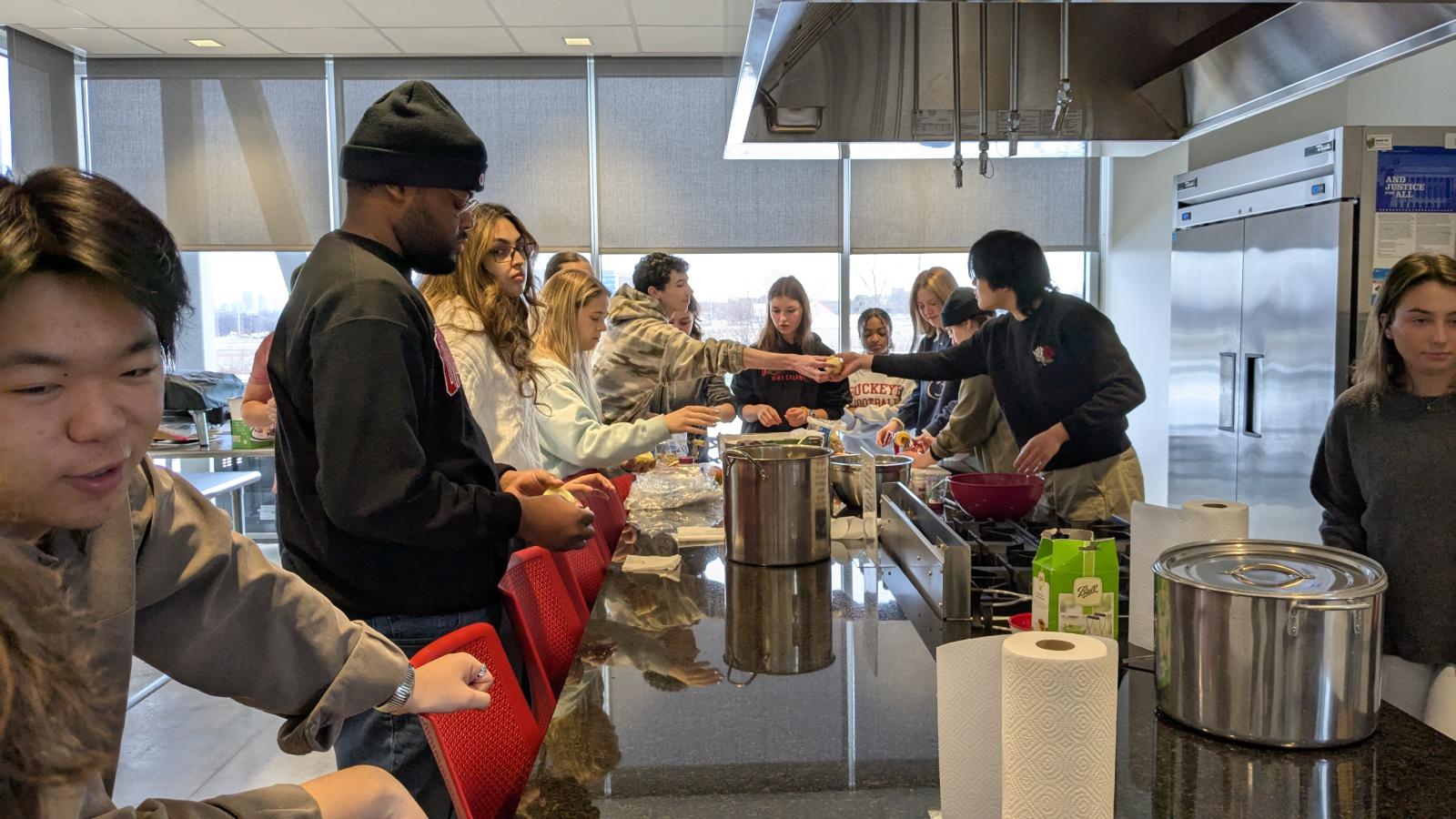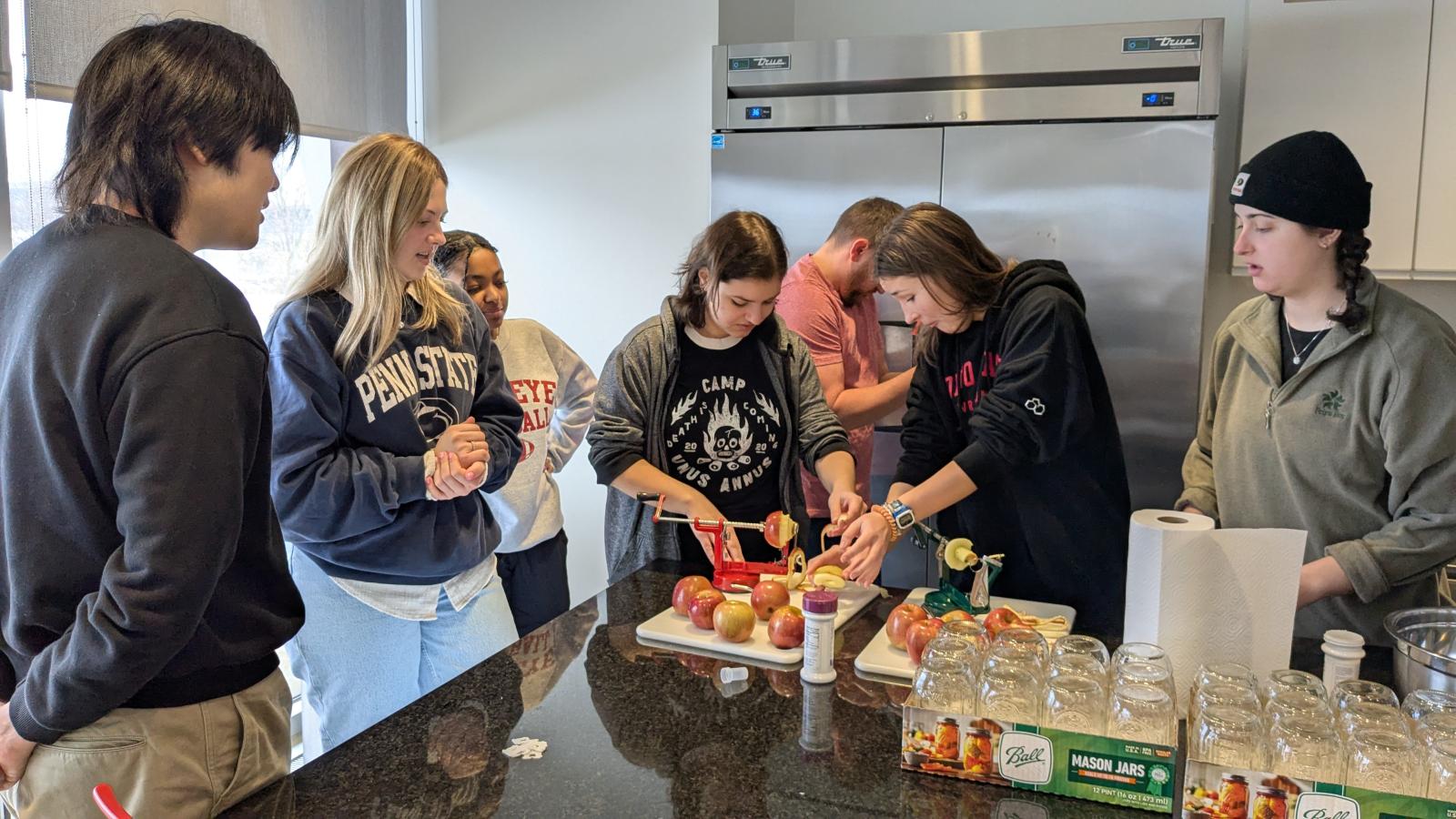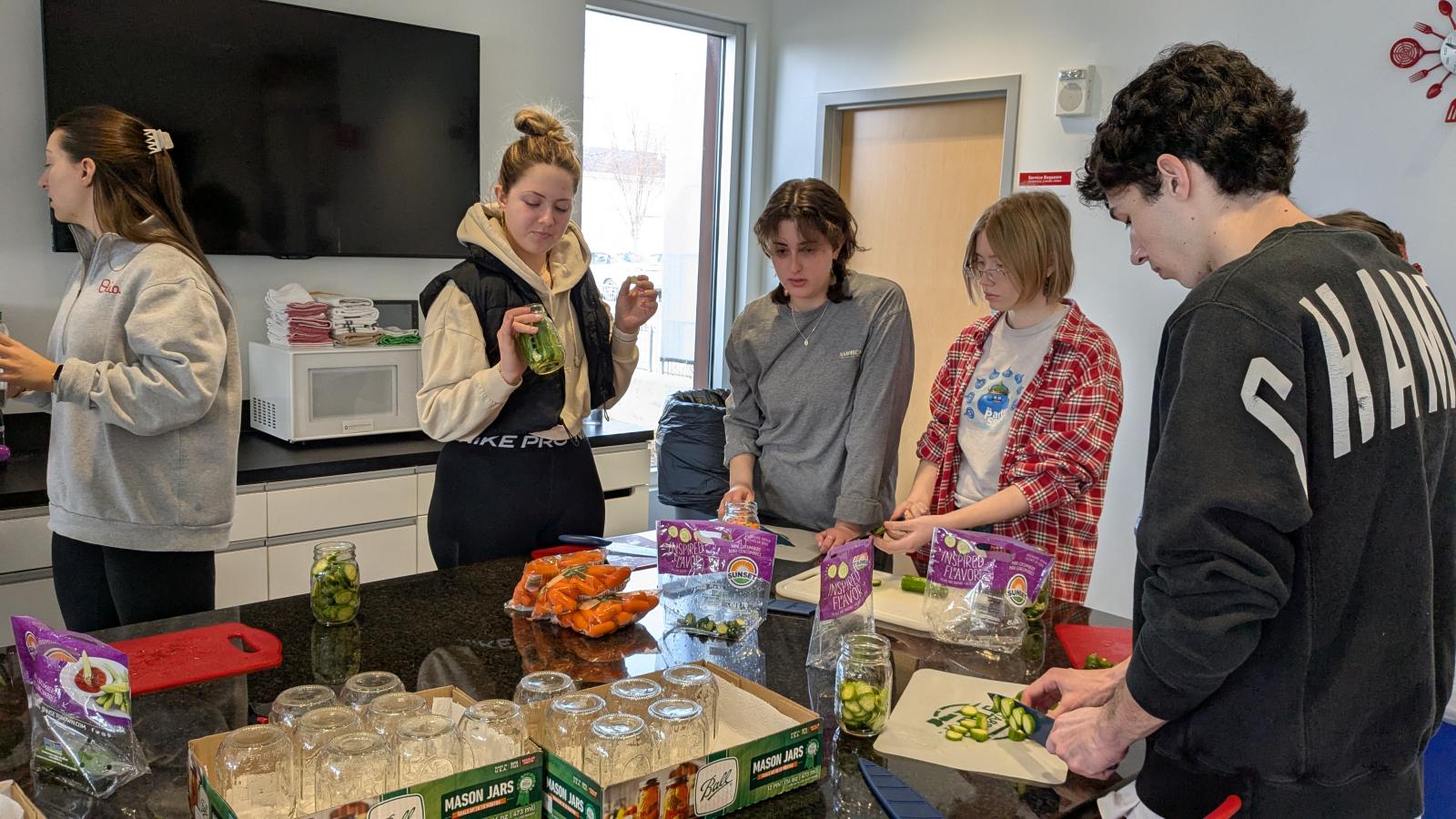From the Classroom to the Farm: Collaborative Design Students Learn Techniques for Reducing Food Waste
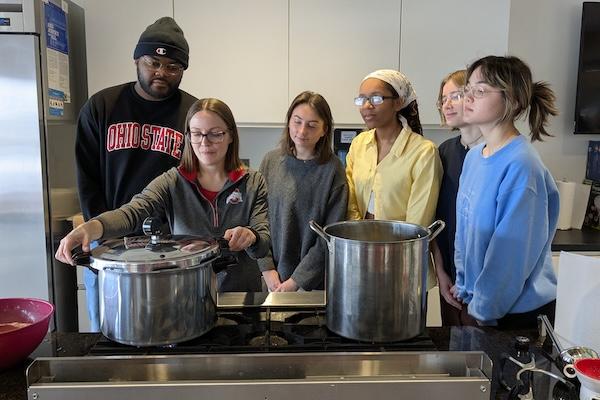
Recently, students of Professor Maria Palazzi’s Collaborative Design section left the classroom behind and took to Waterman Farm to gain hands-on experience in the realm of food preservation.
The unique vertical studio format allows collaborative design students to work together across disciplines on a single topic within the world of design. For example, Prof. Palazzi’s students focus on the vast amount of edible food waste produced in the United States every year, studying the ways in which designers can help to foster a sense of community and individual responsibility when it comes to the reduction of food waste.
To better understand methods of food preservation, the class took a field trip to The Ohio State University’s Kunz-Brundige Franklin County Extension Building on Waterman Farm. With the guidance of Family and Consumer Sciences Educator Jenny Lobb, the students learned how to dry, can, and pickle food to increase its longevity.
“I wanted the students to learn more about it and to have a chance for some hands-on learning in that area,” says Prof. Palazzi, “we are also proposing designs for the first University District drop-off site for food waste and working on solutions for reducing food waste at home.”
The reduction of food waste goes hand in hand with the reversal of climate change. Franklin County is a major contributor to the amount of food waste in landfills, sending around one million pounds of food waste to the Franklin County landfill every day. The methane gas generated by food waste all over the world is a serious agent of climate change and lessening the amount of food waste sent to landfills is just one of many ways that individuals can contribute to a healthier, more sustainable future.
Students can get involved in Ohio State’s goal to achieve zero waste by 2025 by joining the mini bin composting program which allows Buckeyes to recycle organic matter in a sustainable way.

